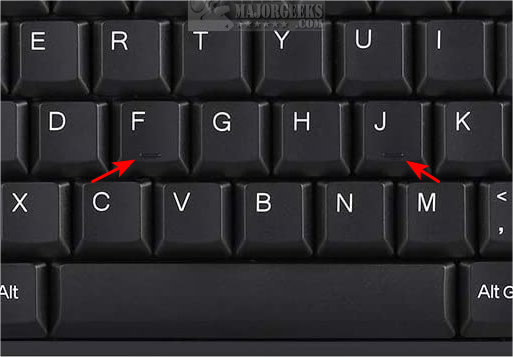Why Does the F and J Keys Have Bumps on a Keyboard?
By Timothy Tibbettson 06/15/2023 |
When typing, you might have noticed that the F and J keys have small bumps in the shape of a thin line and wondered why?
The QWERTY keyboard has many smart features that are often overlooked, and the F and J keys are critical to typing. They are the basis for being able to type without looking at your keyboard.

If you place your thumbs near the top center of the space bar, your index fingers should be on the F & J keys to help you know where your fingers are and find common keys. By using the F & J keys, you build "muscle memory."
For example, your left hand can now easily find the ASDFG keys, while your right hand can easily find the JKL and colon key.
People with some disability issues use the F& J keys to orientate themselves at any time.
It's that easy. If you don't use the F & J keys and find your typing skills lacking, start making use of them, and your typing will improve in no time.
Similar:
What Is the Pause and Break Key on the Keyboard For?
Three Ways to Turn Sticky Keys Off or on in Windows 10
How to Disable the Insert Key in Windows 10
comments powered by Disqus
The QWERTY keyboard has many smart features that are often overlooked, and the F and J keys are critical to typing. They are the basis for being able to type without looking at your keyboard.

If you place your thumbs near the top center of the space bar, your index fingers should be on the F & J keys to help you know where your fingers are and find common keys. By using the F & J keys, you build "muscle memory."
For example, your left hand can now easily find the ASDFG keys, while your right hand can easily find the JKL and colon key.
People with some disability issues use the F& J keys to orientate themselves at any time.
It's that easy. If you don't use the F & J keys and find your typing skills lacking, start making use of them, and your typing will improve in no time.
Similar:
comments powered by Disqus






